Have you ever heard the tale of Forsyth’s old stone depot? Well, settle in, have I got a treat for you today!
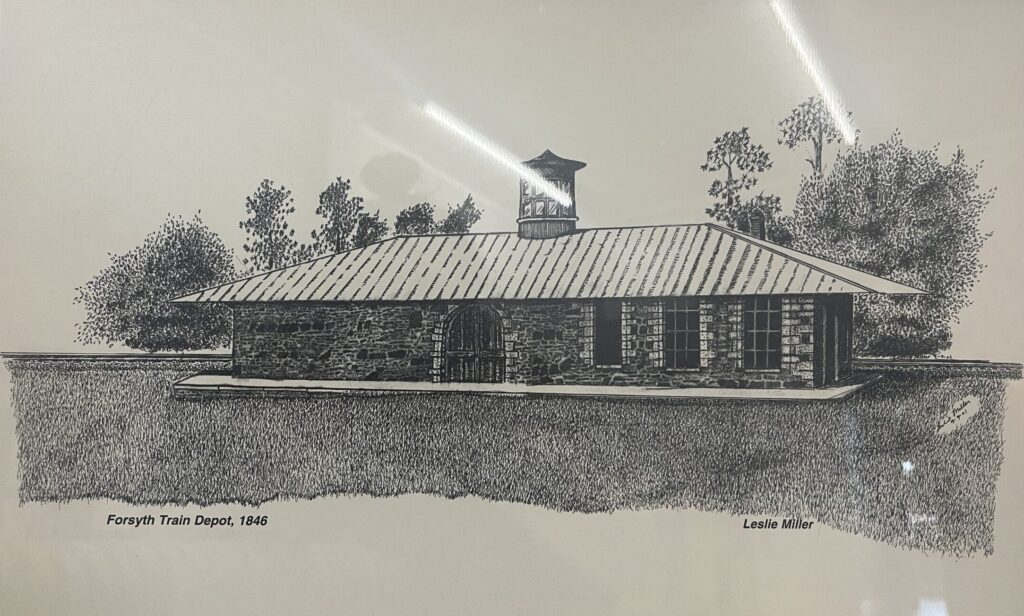
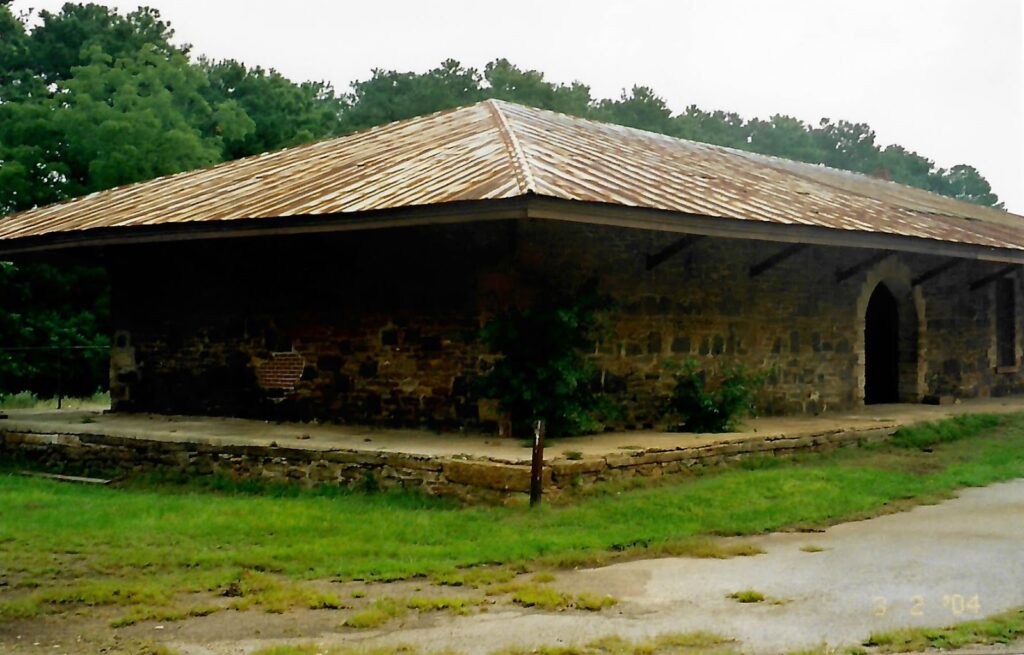

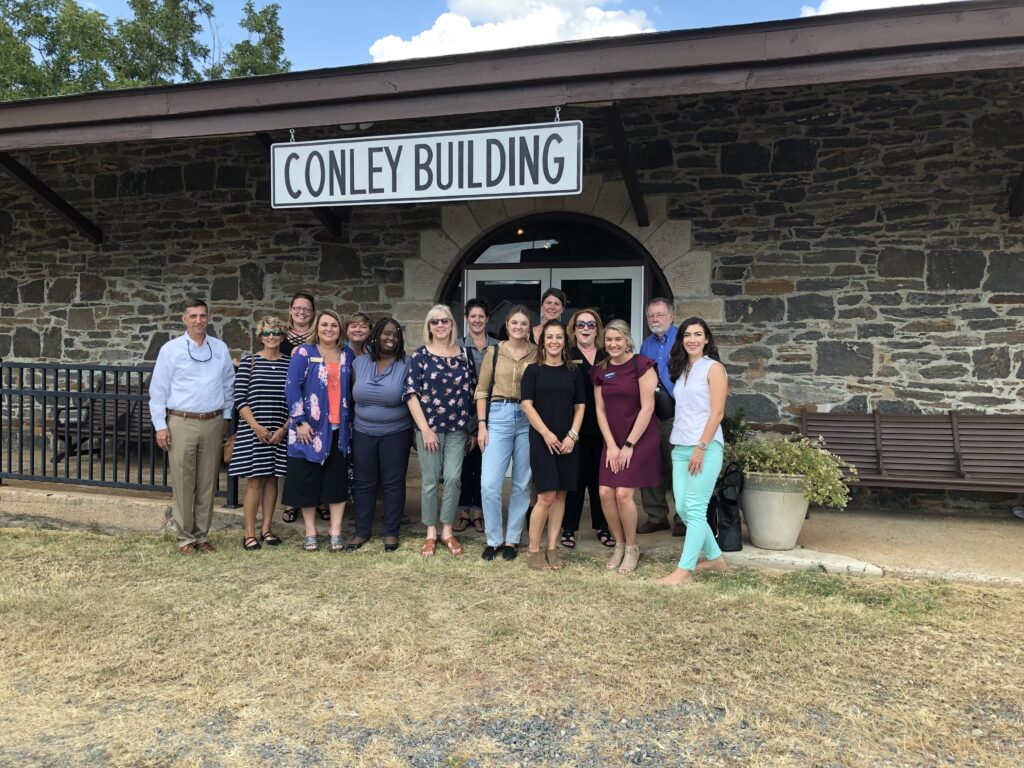
Forsyth Old Stone Depot
Forsyth actually has two depots, known today as the Old Stone Depot (also referred to as the Conley Building) and the Victorian Brick Depot (better known as the Monroe County History Museum & Genealogy Room). While they sit side by side, the latter gets significantly more attention, naturally, being both newer and the site of our local history museum. (Not to mention flashier with its bright red brick and Victorian facade!) But there is so much about the Old Stone Depot to treasure—if walls could talk, oh what a story these would tell!
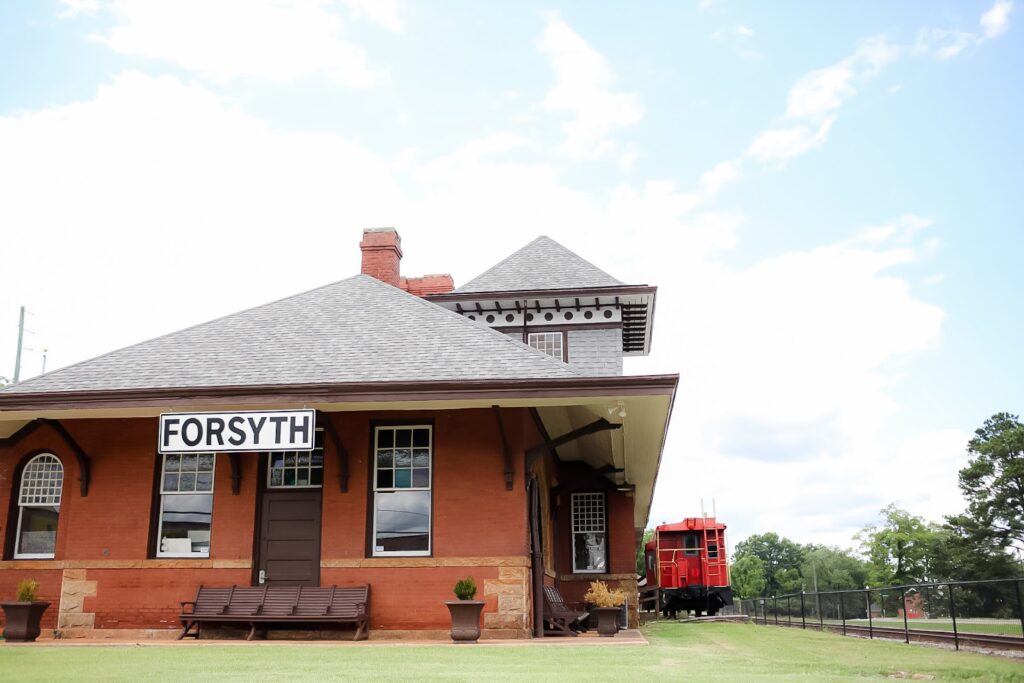
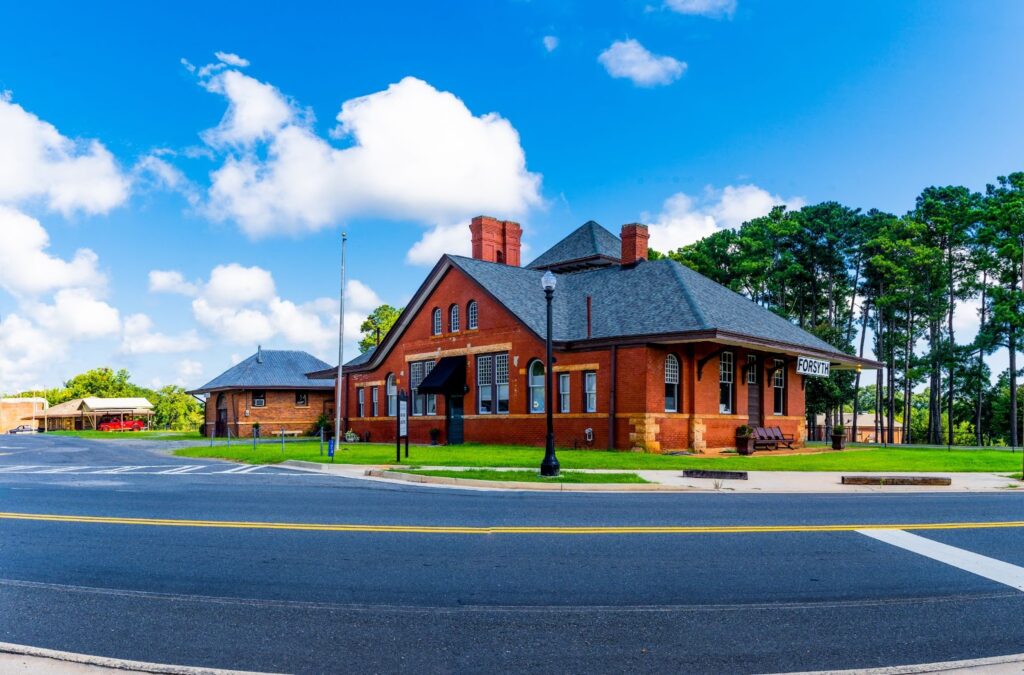
Forsyth Victorian Brick Depot
To do this one justice, I reached out to a family friend of mine, Ralph Bass. You could say Mr. Bass is a bit of a history buff—he’s the vice president (former president) of the Monroe County Historical Society and for all intents and purposes, our local historian. Growing up, he was always the one to go to with a question! If he didn’t already know the answer (a sure rarity), he’d certainly know where to find it.
(Storyteller) Mr. Bass, I so appreciate you meetin’ with me today! How’ve you been?!
(RB) Oh, I’ve been alright. Thank you for having me, this is a real treat. I’m glad the ol’ guy is getting some attention.
(Storyteller) As I understand, the stone depot was the original depot here in Forsyth, is that right?
(RB) That’s right. It predates the brick depot by about 40 years. The Macon and Western Railroad built it in 1858 to be a passenger and freight depot. It’s actually very similar in design to the depot in Jonesboro.
(Storyteller) Macon and Western…was this before or after the Monroe Railroad?
(RB) After, the Monroe Railroad and Banking Company went bankrupt in ’45, a little over a decade before. They were bought and renamed the Macon and Western Railroad, and they’re the ones that completed the line from Macon to Atlanta.
(Storyteller) So why was the stone depot replaced? Why do we have two depots?
(RB) Well, around the turn of the century, Forsyth citizens, led by the Populist Robert Berner, an ambitious local attorney, demanded the railroad build a new passenger depot. According to a brief in courthouse records, the citizens stressed that the stone depot was old, outdated, and only had one room which was used for both freight and passengers. But you could say a real motive was that this facility did not allow for racial segregation. This was the period of the great push for Jim Crow laws in Georgia. Another consideration was that the old stone depot had no toilet facilities. The new depot, when it was finally constructed, had segregated waiting rooms—and toilets for each race.
(Storyteller) Oh that’s just awful! I always just assumed there were structural issues or somethin’, making it unfit. Did I hear you say courthouse? This was a courthouse matter?
(RB) Indeed it was. The railroad was having significant financial difficulties and balked at the expense of a new building. The current one did its job, to their minds, no need to invest in another they could ill afford. Only under a court order did they comply with building a new brick depot to meet the locals’ demands.
(Storyteller) My, what a state. And so what happened to the old depot?
(RB) It continued to be used, now just for freight. It actually was in use well into the 20th century. Through these doors passed bales of cotton from Monroe County destined for cotton mills in New England and abroad. After WWII, though, the construction of the interstate system and use of trucks for delivery instead of railroads meant a decline in the volume of freight traffic and the railroad eventually closed its freight operations in Forsyth. The stone depot then became, for parts of it, a warehouse. Another section was for a number of years used as a small motor shop by Hardy Dumas and earlier by his father.
(Storyteller) But there’s a story there, isn’t there? I recall a while back there was talk of demolishing the stone depot, but it still stands tall right where it always has.
(RB) Oh absolutely, and rightly so! About 1990, Norfolk Southern Railroad—you’ve heard of them, right? They replaced the Macon and Western, albeit through an evolutionary route of purchases and mergers in the last 150 years or so. As I was saying, around 1990, Norfolk Southern decided that the building was no longer serviceable—Hardy Dumas was moving his shop—and demolition was in order. They sent a demolition crew over to first remove the tin roof, the depot’s cupola having been removed years before in a remodeling project. Well, the crew was in the process of ripping off the tin when a founding member of the Historical Society, Jack Fletcher, saw what was happening and in “high dudgeon” (that’s a direct quote from the account I was told) went to Judge Tommy Wilson to secure a cease and desist order from the court!
Negotiations ensued. The railroad had donated the building to the Historical Society, but not the land on which it sits so there was quite a bit of debate as to what to do. Ultimately, the City of Forsyth worked out an arrangement whereby it could rejuvenate the building for public use, installing carpet as well as heating and air conditioning. It was renamed the Conley Building. At the time, it was thought that this building could be best used as a museum. As it has developed, it’s become a meeting place for the Historical Society and various other groups as well as a museum area for Tift alumnae.
(Storyteller) Oh? What’s the connection between the depot and Tift College?
(RB) Well, the railroad was important to the growth of Tift, you know? The women’s college, founded in 1849, began as an institution whose students were chiefly local, and grew to become one drawing students from all over the state. Railroad transportation meant they could come from Attapulgus and other remote parts of the state to Forsyth. This was a big deal, and if the Forsyth Depot hadn’t already been put on the map for our commercial interests, Tift certainly would have gotten us there.
(Storyteller) Well butter my butt and call me a biscuit! I hadn’t realized Tift students would’ve been passin’ through the stone depot, too. My Nana was a Tift alumna, you know. She had friends comin’ in on the train, but by then they were using the Brick Depot.
(RB) [Laughing] Yes, the school was around for almost a decade before the railroad extended to Forsyth and the first depot was built. It wasn’t known as Tift then, of course, but as the Monroe Female College. It was only renamed in 1907 to honor Bessie Tift, one of their alumna who saved the college from bankruptcy.
(Storyteller) What else don’t I know about who passed through the Old Stone Depot? If walls could talk, what stories would they tell?
(RB) Did you know it was used in the Civil War?
(Storyteller) I knew the Civil War was going on then, but sounds like there’s a story here, do tell more!
(RB) Well, the Civil War began not long after the depot opened. We’re talking 1858 for the depot, and 1861-65 for the war. I hate to say it was fortunate, but the railroad and depot already being established really played a significant, though somber, role in transporting soldiers and equipment. The Forsyth depot was the departing point for Monroe County Confederate volunteers and draftees, with many a soldier bidding their loved ones farewell (perhaps for the last time) on this very spot. But it was also a stopping-off point for wounded and ailing soldiers (even some Federal) who were under the hospital authority of the Army of Tennessee. Stout, the medical officer in charge of this army’s makeshift hospitals, organized them around the railroad lines so that they could be mobile for staff as well as for patients and medical equipment. I wouldn’t hesitate to speculate many lives were saved specifically on account of the efficient and timely distribution of wounded and supplies.
(Storyteller) Bless their hearts, very fortunate indeed. I reckon there are those among us today who wouldn’t be if not for the railroad… I can scarcely fathom it. We can’t end on such somber note, though, let’s have one more story before you go!
(RB) Hmm… well one of the things that’s always been interesting to me is the individuals who have come through the depot over the years. Jefferson Davis, the first and only Confederate States of America president, passed by on a number of occasions. Once, after he had escaped prosecution for rebellion, he gave an impromptu speech from his train car while en route to Macon. And then there was Presidential candidate Stephen A. Douglas, who came through in late October 1860 in a valiant effort to save his failing campaign.
(Storyteller) What notable names to have come through our humble depot. I really had no idea how much I would learn today, thank you, Mr. Bass! I am so appreciative of you takin’ the time to share these stories with me and our readers.
(RB) Nonsense, I’m the one who’s grateful to have the opportunity to share them. As long as there are people who know it to remember, the story of the Old Stone Depot will live on.
What did I tell y’all, a sure treat, right? Here we are in 2024, where for over 165 years our Stone Depot has stood, watchin’ folk come and go, some ordinary, some famous, some students, some soldiers. Farmers have brought their products to reach faraway markets (the original scales used to weigh freight remain inside the building to this day), while politicians have come through to reach the ears of our citizens. The Stone Depot stands as a testament to Forsyth’s rich history, with a new mission to preserve, teach and inspire. Because my friends, sometimes, as time renders things out-of-service, visionary minds often see a new purpose in the treasures of the past.
’Til Next Time,
Your Storyteller
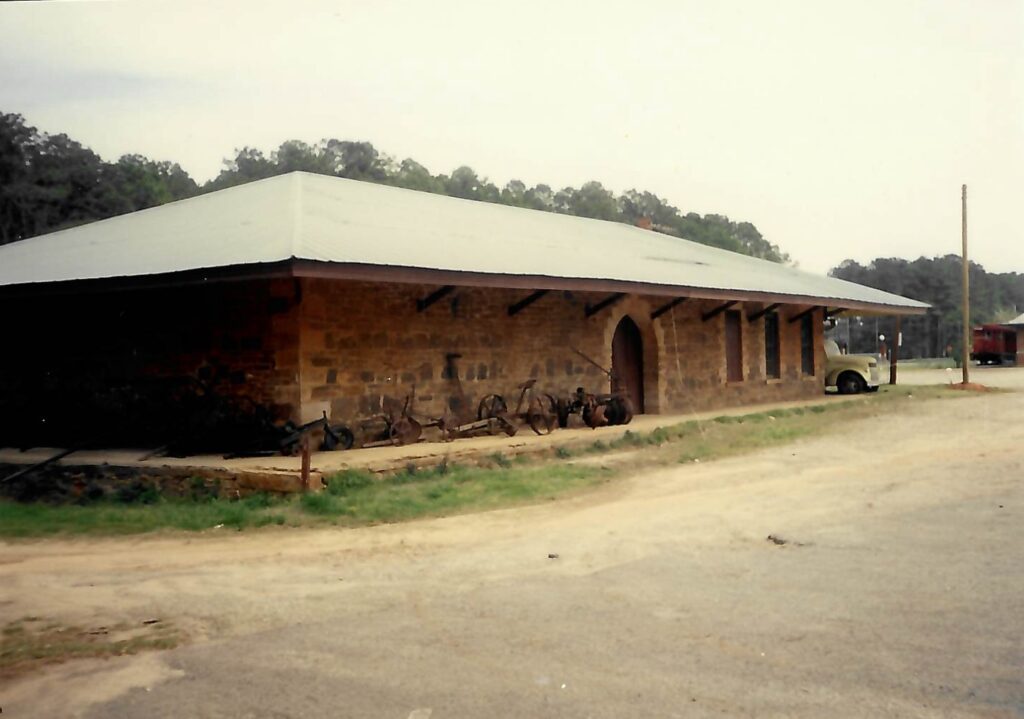
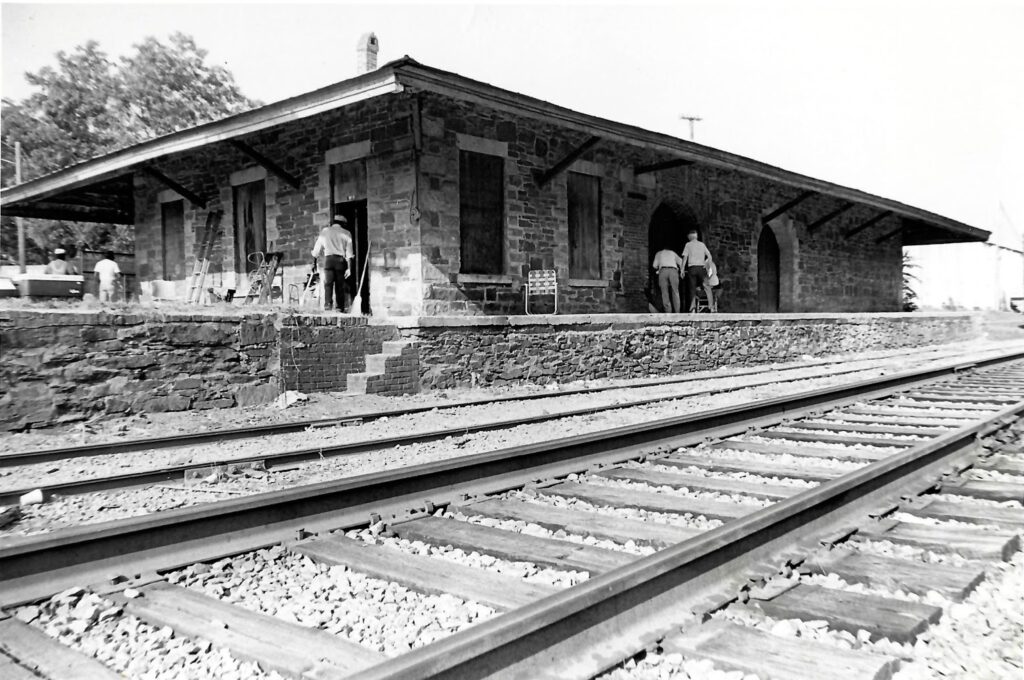
Forsyth Old Stone Depot

